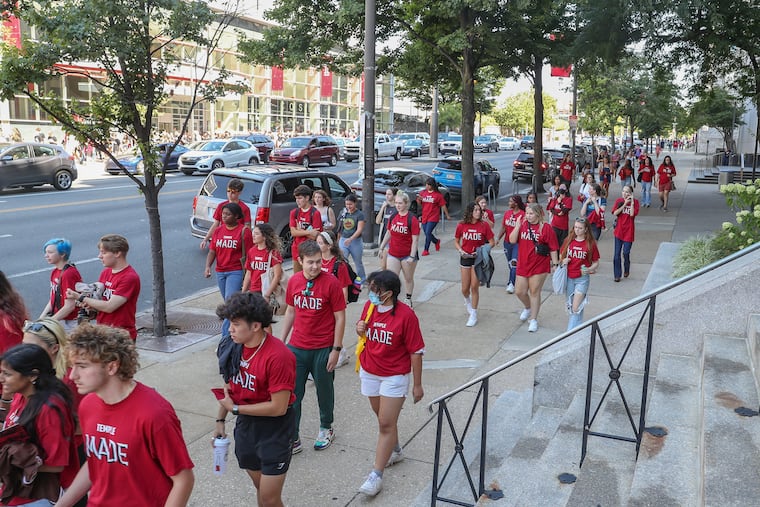Four steps to debt-free college advising
We can prepare students to attend colleges — often selective schools — that have large endowments that can fully fund their education.

President Joe Biden’s student loan forgiveness plan is a big down payment on economic opportunity for young Americans, but it is not enough.
For the last 10 years, I have counseled hundreds of predominantly Black and Latino students in Pennsylvania, New Jersey, and Delaware on college access. As impactful as I know the president’s action will be, there are some fundamental things that we can do right now as a society to address college financing before young people are shackled by onerous educational debt.
For one, too many American students leave too much money on the table. More prudent counseling before students make choices about their college should happen. At TeenSHARP, where I am the director of precollege programs, we spend countless hours scoping out the right financial college choice.
Philadelphia-area residents average $40,000 a year in debt, making it difficult for college graduates to buy a home, start a family, and invest in innovative solutions that can transform our economy. I was born in 1989, when the cost of attending college at the University of Pennsylvania was close to $15,000. Today the cost of attending Penn is well over $80,000 a year. Student debt is astronomical these days. Getting up to $20,000 in debt relief will most likely end debt for many Philadelphians; however, what is needed is a more comprehensive solution.
» READ MORE: Biden’s student loan forgiveness is cause for celebration | Opinion
What I suggest is a debt-free college advising model that works — one that I do every day with students.
Provide an advising model for free to first-generation students and low-income Black and brown families, comparable to what one might get from a private college admissions consultant or a college adviser at an elite boarding school.
Push students to develop systems for academic excellence. Advocate for students to take the most rigorous courses in their high school, encourage them to strengthen their leadership involvement, and place them in premier enrichment opportunities.
Constantly give students academic and leadership feedback, and work with their families to strategize how they can be ready to attend and thrive at a college that meets their full financial needs.
Provide a federally funded office of college enrollment for school districts that qualify for free lunches so there is trained and qualified staff to shepherd students through the process of making college affordable.
In these ways, we can prepare students to attend colleges — often selective schools — that have large endowments that can fully fund their education.
Out of the nearly 200 students that we work with annually, more than 95% of our students are accepted into a top college. A full 100% go to a four-year college, and 100% graduate in six years (the overwhelming majority in four years). The majority of our students have nearly full rides to college, and 60% of our students graduate with less than $15,000 in debt, which is $25,000 less than the average Philadelphia student. Thus, for our students, President Biden’s plan will have an immediate impact.
» READ MORE: Biden’s big move on student loans only a first step toward making American college great again | Will Bunch
I recently worked with a student in West Philadelphia who is now a rising junior at a very selective college on a near-full ride. I know that he would’ve been in trouble without an intensive approach to advising. His report card was a mixture of A’s, B’s, and C’s. Yet after I coached him to understand how A’s in rigorous classes are essential to paying for college, he catapulted his study behavior and became a straight-A student during his junior and senior years. In addition, I supported him with his application to a competitive high school prelaw exploration program in Virginia. These counseling experiences opened doors for him to leave college focused on a career and his family, rather than debt. He always had the ability to be a top student going to college debt-free, but he needed a strong support system to make that happen.
While legislators prolong the debate on the future of higher learning costs, we as a people can help students enter college now with little to no debt through the model mentioned above. President Biden’s plan is just the beginning of change for our country. Right now, we need people in the lives of our children who can direct them to make smart academic and leadership decisions in high school. This approach can lead to them canceling the words “student loan” out of their vocabulary.
Anthony Phillips is the director of precollege programs at TeenSHARP.